
When guitarist Jay Donnellan was dismissed from Arthur Lee’s band Love in late 1969, he reverted to his former name, Jay Lewis, and contacted guitarist/singer Barry Brown to join him in a new group with keyboard player/singer Jim Hobson, which became known as Morning (see part one of the story).
Brown had only recently dissolved his group The East Lynne and was writing a fresh batch of material.
Months earlier, during the summer of 1969, Brown had taken the opportunity to record some demos of these new songs at Hobson’s studio. For the sessions, Brown enlisted former Moorpark Intersection members, Matt Hyde on lead guitar and Jim Kehn on drums plus his old friend Gary Horn on bass to provide musical support.
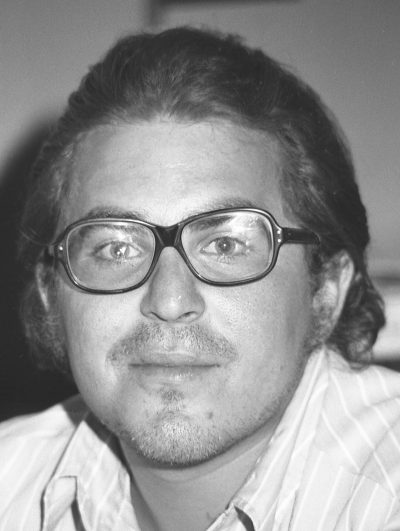
According to Kehn, four tracks were recorded and attributed to East Lynne on the tape: “Good Time Music”, “I’m Just A Poor Boy”, “I’ll Be Happy”, which Hobson overdubbed organ on, and a song that subsequently turned up on Morning’s debut LP, the country-rocker “It’ll Take Time”.
As promising as these recordings were, however, they were put aside once Lewis suggested forming a new group at the end of 1969. The yet-to-be named trio then took its first steps towards recording Morning’s debut LP by cutting three tunes at Hobson’s studio, using various configurations.
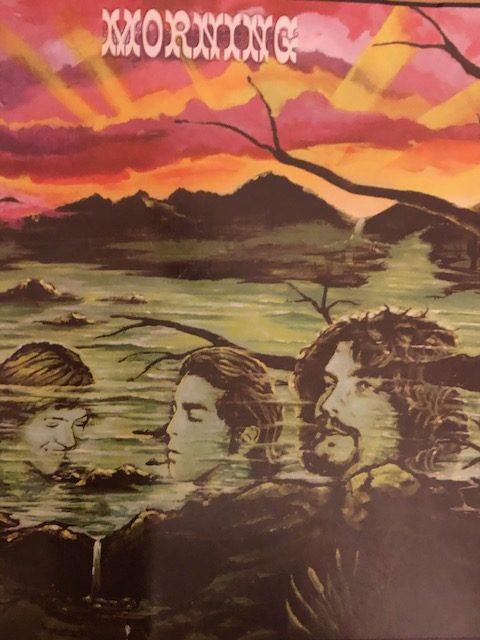
The first song the trio turned to was Jim Hobson’s gospel-flavoured “Time” featuring Jay Lewis on acoustic guitar, session player Paul Martin on electric guitar and two members from Love: George Suranovich on drums and Frank Fayad on bass.
“You can hear how tight and different sounding that track is as these three played together a lot,” says Jim Kehn, who, along with Barry Brown, had no part in the recording aside from singing backing vocals.
Next up was the superb “Angelina”, an old East Lynne song co-written by Barry Brown with guitarist Rick Dinsmore.
“He helped write part of the chorus with me, so I put him on that song,” explains Brown.
“[Angelina] was about a love relationship. Actually, the name is fictitious. The relationship is not. The actual girlfriend’s name was Vicky but who’s gonna write a song called Vicky right? So, I had a bass player buddy called Gary Horn and he had a little daughter named Angelina and I grabbed the name. I was actually at his place the morning I started writing ‘Angelina’.”
With Brown’s heartbreaking vocals carrying the song, Kehn provides a solid drum pattern to complement Lewis’s tasteful acoustic guitar flourishes. But it is Hobson, doubling up on organ and piano, who really takes the song to another level with his exquisite piano solo.
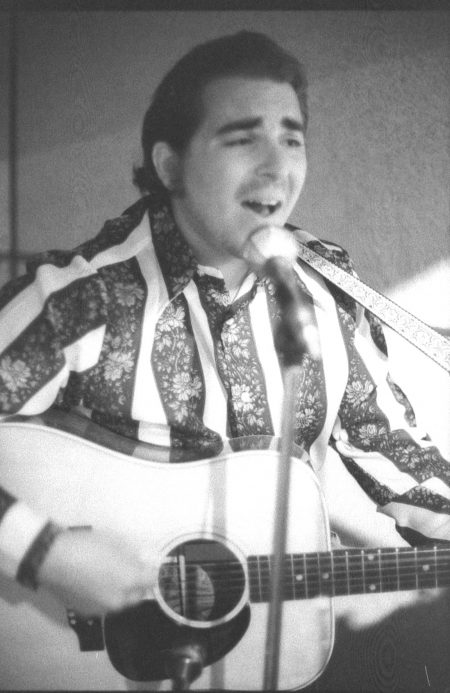
“That was not the original piano,” admits Hobson. “Basically we went out in the studio and we worked on the tune, just Jim Kehn and I if I remember correctly. I played a piano part and he played off the part I was doing and then we got the drum track. Then we started from scratch, probably acoustic guitar and one step at a time to get it the way we wanted it. We had a lot of time to rehearse and essentially live in the studios.”
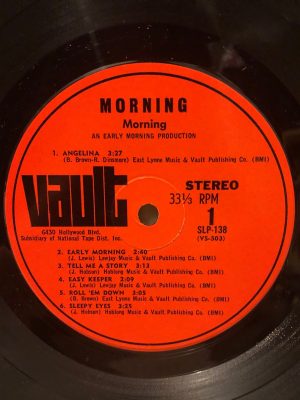
To complete the initial recordings, the group turned to Lewis’s “Early Morning”, a mellow jazz-flavoured number, noteworthy for its call and response harmonies and Hobson’s jazzy piano break.
As Hobson makes clear, the three tracks were recorded to shop around for a possible record deal. At this very early stage, the trio still didn’t have a drummer or bass player and there were no firm plans to put together a group at this stage.
Armed with the recordings, the musicians approached former Coachman Bob Mercer, who was now working as a record distributor, to help push the demos to various labels in search of a deal.
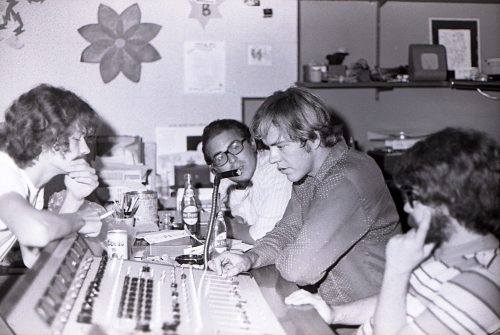
Hobson remembers that a number of record companies expressed an interest but in the end they signed with the tiny Vault label.
“I think the main reason why we went with Vault was because we were going to have a free rein as to how the music would develop,” he says.
One of the musicians, however, was not happy with the turn of events. Looking back on the first batch of recordings, Jim Kehn remembers that no one was particularly interested in recording his own contributions. Upset that he was not being considered as an equal member, Kehn says the experience left him deflated.
“Jay, Barry and Hobson took their three tunes and with help from Bob Mercer got a record deal, with them as producers,” he says.
“In hindsight, I probably should have left rather than becoming a sideman. Nevertheless, I played and sang on the album and eventually got a song on it.”
Hobson, however, says that the set up has to be put into context. “We didn’t have a whole lot of money from the record company so we couldn’t go out and hire musicians,” he says.
“That’s when we decided we were going to get the group thing happening. We said, ‘Anybody who has a song we have the right of not doing it but if you’ve got a song that’s going to sit with what we are doing, you get a shot and you get to keep your publishing. You also get to play in a group’. It really was a co-operative thing at the time.”
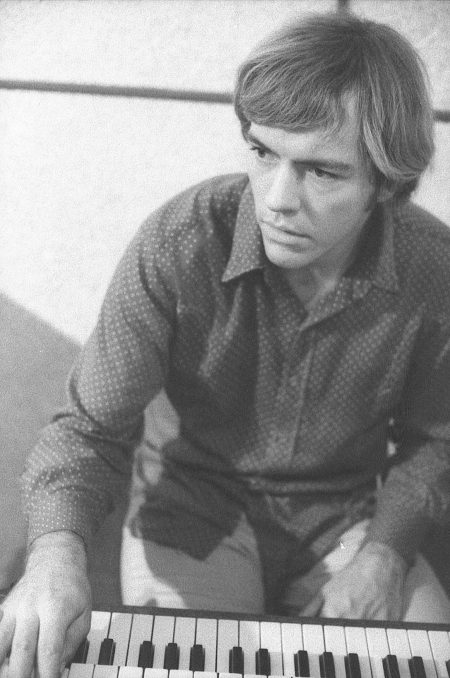
Lewis also defends the way things turned out. “It was all equal in royalties, it was equal in every single thing and they [Kehn and the other musicians] had the luxury of not being locked into a contract that held them accountable after the band broke up. In some respects they were much better off.
“We had a difficult time making them [the record company] accept three people with control and we chose the most active participants/writers. It was not presented, apart from that first cover, that the three of us were the main team. In the studio it was never presented that way.”
Kehn, however, refuses to accept this interpretation. “It was very evident they had complete control and they exercised it,” he says.
“They [later] edited my drum solo on ‘And I’m Gone’, taking out sections, throwing some away and re-sequencing the rest. All of this was done without my knowledge until after the fact. I wasn’t asked about it or present when it was done.”
Despite his initial reservations, Kehn agreed to sign on as drummer and singer.
With another former Moorpark Intersection member Terry Johnson providing rhythm guitar alongside bass player Bruce Wallace, the trio of Barry Brown, Jim Hobson and Jay Lewis began to record a new batch of material to add to the tracks already in the can.
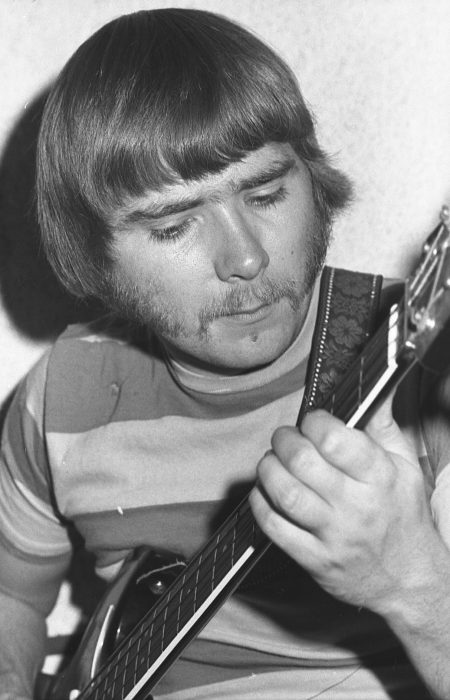
“Terry was the original bass player in The Coachmen and he also played pretty good guitar,” says Lewis.
“We needed a second guitar in the band and he got changed over to being a guitar player and a bass player brought in.”
One of Hobson’s strongest contributions is the infectious “Tell Me A Story”, which was subsequently lifted from the debut LP as the lead off single. The track is reminiscent of Jackson Browne’s early ’70s work, which is even more remarkable considering it pre-dates the singer/songwriter’s debut LP for Asylum by an entire year.
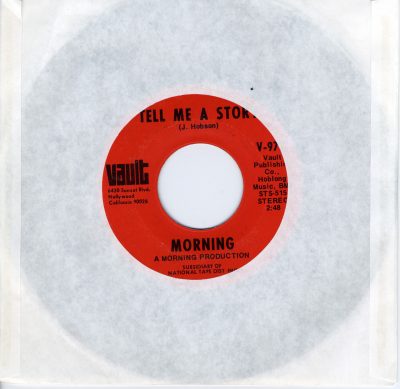
“I have a really low tolerance for bullshit and basically there were several instances where I decided I needed to write a song about it,” explains Hobson on the meaning behind the song. Graced with a superb lead vocal from Barry Brown, “Tell Me A Story” should have been a huge hit but fell under the radar due to poor promotion on Vault’s part.
“I sang the lead on ‘Time’ but that’s the only thing I sang lead on,” admits Hobson. “I was never a great singer and I couldn’t get it together on ‘Tell Me A Story’. Barry was the strongest singer in the group.”
For “Sleepy Eyes” Hobson, Kehn and Lewis offer up a beautiful harmonic blend.
“That was all in two or three part I believe,” says Lewis. “If there was going to be harmony vocal, two or three people went out around one mike and sang it. Nothing was separated out. It was just one big room with us, which to this day, I believe is a far superior way to record than to do one instrument at a time.”
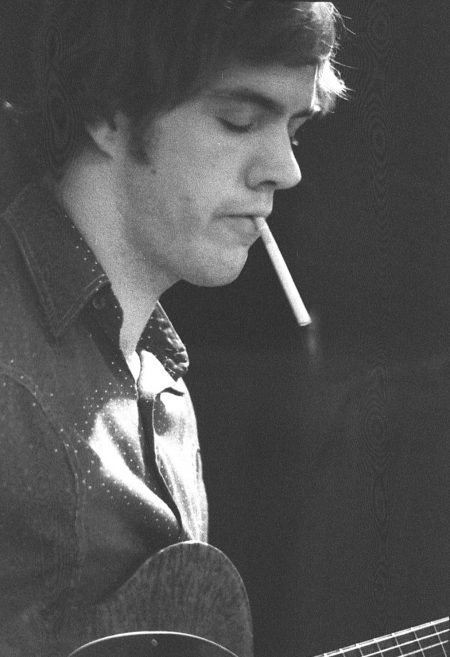
Lewis came into his own with the superb “And I’m Gone”, an eerie multi-layered vocal mood piece complete with shifting acoustic guitar figures, Hobson’s breathtaking piano interlude and Kehn’s funky drum solo, which is brought to an abrupt end by the sound of an explosion.
“I came into the studio with that idea,” explains Lewis. “I was probably very Beatles’ influenced on the ‘Day In The Life’ thing. I thought, ‘What I’d like to do is keep this song small’ and at this moment in time, I wanted to hit with everything we had in the studio. I wanted to be like the kitchen sink fell you know. As big a bomb as we can possibly lay at this one spot and then continue in this other direction.”
Despite the impressive effect, the guitarist is quick to point out that the musicians avoided using any studio tricky on the first LP.
“There was no echo available. That’s one of the reasons why it [the album] pulls off so well. There is nothing with echo on it, unless it was the reverb on my guitar. There’s nothing on the vocals, nothing on the drums. It was just simply that we worked pretty hard on the sound of the individual instruments. A lot of that thankfully was due to Jim Hobson who to this day is a real purist.”
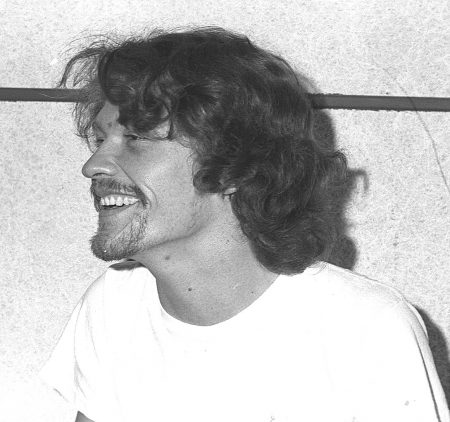
According to Brown, the song “As It Was”, which he co-wrote with Jay Lewis, goes back to their time together in Bobby Bond & The Agents.
“We’d be sitting around at about four in the morning at his house blitzed out of our minds,” says Brown. “That’s all we’d do. We’d go do our gig and then party all night. It was all music and fun.”
For his own heartfelt ballad, “Roll ‘Em Down”, Brown turned to his religious background for inspiration.
“I was raised Jewish. I always had an affinity to open up the Old Testament here and there. I related to the freedom movement within the black community. At that time people wanted to take things in a new direction and not feel oppressed. I just related the fighting cause of freedom to how God had used Moses to free the Israelites from Egypt. That song is a parallel of different meanings in terms of people seeking their freedom.”
Closing the LP, Kehn manages to sneak on his own country-flavoured “Dirt Roads” featuring guest player Al Perkins on steel guitar.
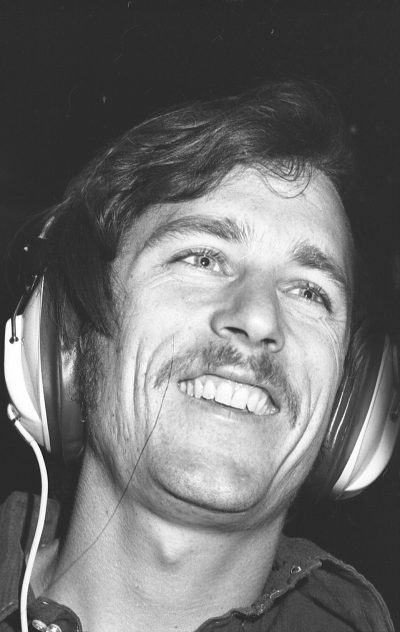
“For two years in my life as a kid, I lived on a farm in a very small Northern California community,” says Kehn on the inspiration behind his lone contribution.
“It was the best part of my childhood and is what I was reminiscing about. I played the rhythm guitar on this track and Hobson sang harmony with me on the end section.”
Hobson adds that either Brown or Lewis also added to the background vocals/harmonies on this track and that Lewis played rhythm guitar.
Relegated to a sideman from the outset, Kehn kept busy as a session player throughout the LP’s recording.
In early-mid 1970, Richie Podolor brought him into the studio to record demos with Iron Butterfly, replacing drummer Ron Bushy, and also invited him to lay down some drum tracks for Blues Image, featuring soon-to-be Iron Butterfly member Mike Pinera.
Looking back on the whole recording process, Lewis estimates that the entire LP was laid down over a three-six month period.
“It all seemed to go pretty quick,” he says. “Everybody was pretty excited and many times our instruments were just set up in the studio, miked and ready to go, so when we walked in the door we continued from where we were and that was a great luxury.
“Occasionally, we’d have somebody like Hoyt Axton come in or some other person and we’d say, ‘Ah shit, we gotta break our stuff down and put it in the other room’ and we’d have a break for a few weeks. Those breaks were always used very well, particularly with between Barry and I. We would always get together and play guitars and work on his new song or work on mine.”
“It was hours and hours in the studio,” adds Brown. “We lived in that studio. We’d be there all night long. There were some days where we’d be in there two days straight. We’re talking all day and all night. A lot of that arranging was not that it was not very meticulously planned out and orchestrated but it was created right there in the studio. It was quite a creative process.”
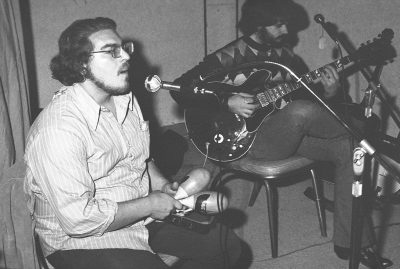
Produced by Lewis, Brown and Hobson, with assistance from Matt Hyde as engineer, and mixed at Larrabee Sound, a studio built by Carole King’s former husband, Gerry Goffin, Morning’s eponymous debut was a remarkable achievement. All that was left to do was come up with a suitable name.
“If I remember correctly, I was the one that came up with it,” says Hobson. “I just thought, ‘Early Morning’, ‘New Day’ and I just thought, ‘You know what, Morning would be a cool name for this group, it’s so much like the beginning of something, an awakening’. I am pretty sure that’s how it came about. Contrary to what some websites are listing, Morning was never named ‘the Morning and the Evening’.”
For the band’s remarkable cover, the group turned to artist Kent Bash (see comment section at the end), who was homeless at the time.
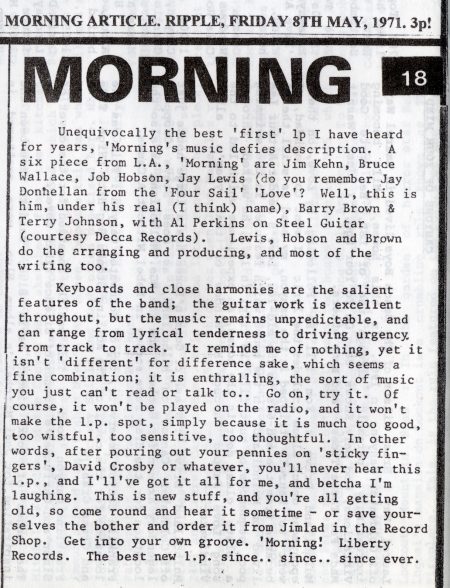
Pre-release reviews sounded a positive note. John Gibson, writing in The Hollywood Reporter’s 9 September issue, was particularly impressed and presented an encouraging write up.
“The group is five guys who play, sing, write and even record themselves. This is noteworthy only because Morning is one of the few groups who know what to do with total control; they make good records.
“Their album is like Elton John’s in that it will seemingly come out of nowhere, and before you know what has happened they will be covered by everyone in the business. Their music is original and surprisingly imaginative The songs themselves are very good, and the playing is from good to incredible. Drums and piano especially.”
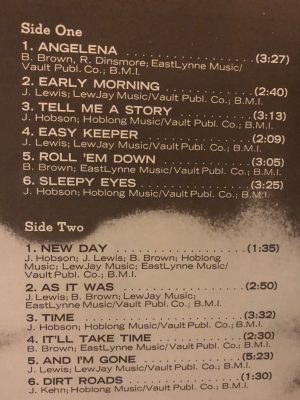
Record World, reviewing the LP months after its release on 2 January 1971, was equally positive.
“Here’s a new group with all the promise of their title. Label would be wise to pick almost any cut and get them going on singles as well. They are in the Creedence style of things, but have enough original of their own to make a go of it.”
David Lees, reviewing the record two week’s later in the UCLA Daily Bruin, was less impressed, however, noting, “Once beyond their aesthetically atrocious album cover it becomes apparent that the group sounds like many of your high school favourites, but it’s hard to figure out just which ones.
“Beneath their early Beach Boy high harmony patina Morning manage to approximate the styles of The Association, The Rascals, The Byrds and The Band. Even to attempt to copy the aforementioned demands a collection of first-rate musicians, writers and arrangers, and Morning include all three. The group works hard, but they’re asking you to pay for something you’ve already heard.”
This writer doesn’t agree with that assessment; Morning may have had their influences but the music is fresh and original (and really quite unique). Even so, having spent months perfecting the recordings, it was disheartening to see Vault do little to no promotion once the LP hit the shops in the fall of 1970.
“We had airplay,” remembers Hobson. “There was a station in L.A, that was actually a great old underground radio station called KPPC. I think they had the ultimate comment. I was listening one night and they played ‘New Day’, ‘As It Was’ and ‘Time’, all three of those and at the end of it the guy said: ‘That was Morning. There’s a group who’ve sold as many records as the Russians have landed men on the moon!’ I will always remember that.”
Despite the limited exposure, Morning did play about six live shows in a bid to push up sales.
“I think we did the University of Santa Barbara, something down at the Santa Monica Civic Auditorium, the San Diego Civic Auditorium and an American Civil Liberties Union or something,” Hobson recalls.
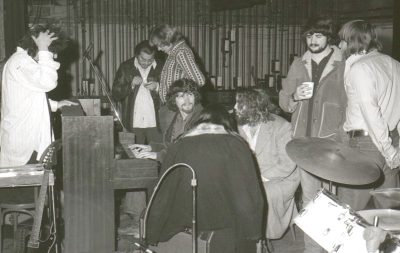
Lewis also remembers playing at the Troubadour [opening for Mason Williams] and a private party for the record company [with The Hampton Hawes Trio] where Phil Spector was in attendance.
“Jim [Hobson] just reminded me that ‘Yeah, I’m the guy that knocked Phil Spector’s plate of food out of his hand’,” laughs the guitarist. “I was lucky he wasn’t packing a gun in those days.”
Brown has fond memories of one particular gig, which he places at the Santa Monica Civic Auditorium.
“The bass player got so drunk that he couldn’t stand up! It wasn’t Bruce [Wallace] or Stuart [Brotman]. It’s what led us to getting Stuart. It was another bass player.”
As the guitarist notes, Morning needed to find an urgent replacement on bass when Bruce Wallace walked away from the group.
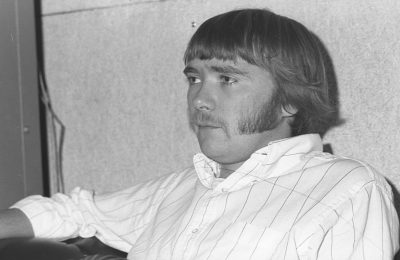
As luck would have it, the musicians enlisted the services of a brilliant musician, former Kaleidoscope member Stuart Brotman, who came on board in time to appear on most of the sessions for Morning’s second LP, Struck Like Silver, recorded in mid-1971.
One of Lewis’s strongest contributions to the set is the largely acoustic “Only To Say Goodbye”, based on several real life events, including the guitarist’s departure from Love and, more specifically, his narrow escape from a wild fire that burned down a 12-acre ranch that he had leased and was in the process of doing up. “I was realising how many things I had taken for granted in retrospect,” says Lewis.
Equally strong is the superb “And Now I Lay Me Down” with its impressive gut string guitar intro, which conjures up images of Love’s early work.
“There was quite a lot of story to that inspiration, as someone very close to me died and I was singing from their position…. or what I perceived the position to be anyway,” explains Lewis. “It was their spirit completing the tasks needed and being able to rest at long last.”
On a different note, the guitarist chips in with the beautiful instrumental piece, “Jay’s Movie Song”, featuring Lewis doubling up on bass. “That was something [Bob] Mercer brought to me to do, an instrumental song to be a theme song for this particular movie,” he explains.
“It was like a Jack Nicholson movie or something; it was some big deal. I guess I didn’t get it but we thought the song turned out good enough. It never had a title and we just left it with that and put it on the album.”
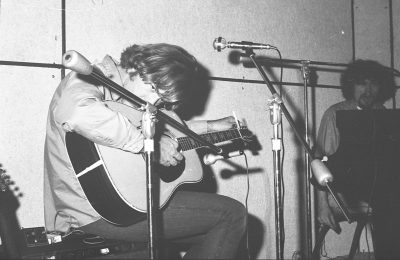
As song-writing goes, Brown came up with arguably the strongest original material on the second LP.
“You’ll see with my songs that there’s a theme and it’s relational usually,” says the guitarist on the inspiration behind his contributions to Struck Like Silver.
One of his very best, “Comin’ In Love”, featuring a superb fiddle solo courtesy of guest player Chris Darrow, is a case in point.
“My sister and her family had moved to the East Coast. I was sitting on a couch in my mom’s living room and they were coming that night to California to see us and so I wrote ‘Comin’ In Love’. It was just about the family coming in love and then I kinda singled it out a little bit but that was the inspiration behind that song.”
Brown’s “Understand My Ways”, which once again features Lewis doubling up on bass, relates to the songwriter’s struggle with his own anger.
“You’d love to have me as a friend but you just wouldn’t want me to be pissed off at you,” he laughs.
“Believe it or not, it’s a song to my wife. Basically, it’s a kind of apology [while] at the same time a statement of ‘It’s nice to know you understand my ways’.”
The songwriter’s wife is also the subject of his best contribution, the majestic “I Ain’t Gonna Leave”, which features some sumptuous piano playing from Hobson, Brown’s heartfelt lead vocals and Lewis’s spine tingling steel guitar work.

Interestingly, it’s another woman that provides the inspiration behind the LP’s title track, explains Brown. “It was actually written about this beautiful blonde girl I was chasing for a long time back in the club days. I never did hook up with her! She was the prettiest girl I had ever seen. She was a groupie.”
Brown’s “Struck Like Silver” is also, incidentally, the only song on the album that does not feature Kehn’s drum work with the songwriter doing the duties.
Billboard, which reviewed the album in its 6 November issue, gave the album a positive spin.
“Morning’s first album was recorded for the Vault label a little over a year ago and was one of those meritable sleepers that critics liked but few others got to hear,” it reported. “Their new release, Struck Like Silver includes Joni Mitchell’s ‘For Free’ and ‘Never Been To Spain’, written for the group by Hoyt Axton (Ed-this is not true), in addition to Morning’s own musical alchemy. It’s a new dawn.”
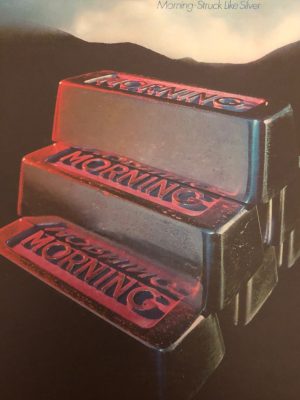
While Struck Like Silver is a natural progression from Morning’s eponymous debut, and arguably a more mature offering, the sessions were marred slightly by the coming and goings of various musicians, including Terry Johnson, who stuck around to play on only “Comin’ In Love” before dropping out.
“[It was] personalities I think and nothing happened [with the first album],” says Hobson.
“There was a lot of work going into the group. It was typical of a lot of bands. I’ve seen more bands over the years with a lot of talent that couldn’t stay together for practical reasons or personal reasons or whatever.”
“We put all this heart and effort into the first album and we’re really proud of it and nothing happened,” adds Lewis on Morning’s slow unraveling. “I think that’s what started to take the band apart.”
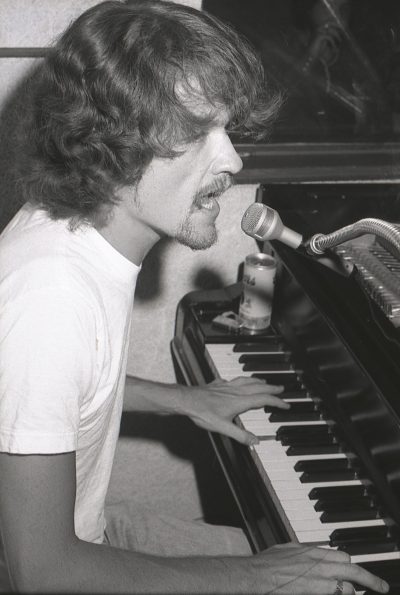
On a more alarming note, Hobson was starting to separate himself from the rest of Morning, contributing no songs to the new record. Not only that, but he left production chores to Lewis and Brown and only pitched in to engineer the LP with Hyde and Lewis. What’s more string arrangements are by Lewis and former Coachman Mike Dean, who sadly died of cancer in 2013.
“I was basically fulfilling my contract,” suggests Hobson on his gradual withdrawal from the recording process. “I was starting to go in a different direction. I had some personal situations that I wasn’t happy with so I was getting pretty negative about things.”
To compensate for the loss of Hobson’s songs, Brown and Lewis brought in material that Morning had been playing live, a superb version of Joni Mitchell’s “For Free” and an equally superlative reading of Hoyt Axton’s “Never Been To Spain”.
“Hoyt was in the studio for a couple of weeks I guess,” says Brown. “We loved ‘Spain’ so we started doing it like a live rendition. ‘For Free’ was a philosophical statement. I mean obviously, what a beautiful tune. We used those tunes live and then decided to record them.”
According to Hobson, Morning had first heard “Never Been To Spain” in early 1970 when Axton was recording at the studio while the group was laying down “Angelina” for its debut LP.
Morning had approached the singer/songwriter with the intention of recording a cover only to discover that Three Dog Night had already expressed an interest in cutting their own version.
“Then Three Dog Night came out with ‘Joy To The World’ and we were thrilled that they didn’t do ‘Spain’, so we recorded it,” says Hobson.
“If I remember correctly, it was almost simultaneous, the day the second Morning album was released and the day Three Dog Night’s version of ‘Never Been To Spain’ was released. Totally different feels between our version and theirs of course, but you already knew who was going to get the attention on this tune.”
Despite playing on most of the record, Hobson increasingly focused his attention on doing engineering work at Larrabee Sound. Morning recorded and mixed most of Struck Like Silver there and Hobson would use the facilities to engineer John Mayall’s Memories.
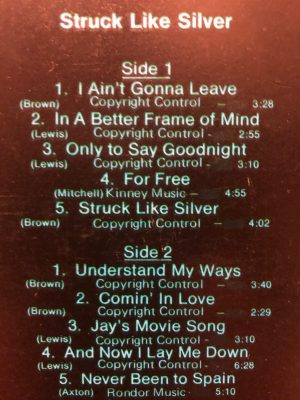
“There was going to be a third album,” says Hobson. “Barry and Jay were keeping it going and I remember we recorded a couple of my tunes at Western [Recorders]. One of them was called ‘Lady’ and the other one was called ‘Take Me In’. [But] We never finished them.”
This writer has been fortunate enough to hear the still-to-be-released “Lady”, which features L.A. bass player Jim King and Texan drummer Jim Marriot . If the recording was a barometer of what might have followed, Morning’s third LP would have been an absolute killer.
With Hobson providing a rare lead vocal, the track has all of the ingredients that make up a classic Morning song: brilliant musicianship, gorgeous multi-part harmonies and a melody to die for. To top of it off, Chris Darrow provides another stellar performance on fiddle.
“There’s another one of mine,” says Lewis regarding an unfinished, untitled piece that he contributed to the final Morning sessions.
“I can’t judge it. It’s not one of my best efforts but other people tell me exactly the opposite, so I would be happy if it was considered [for release]. Maybe it would be called ‘In My Eyes’. That’s the title I would use today.”
As Brown recounts on the group’s final weeks together, business decisions were a major cause behind the band’s eventual demise.
“Everything was being sold off to Fantasy,” he says. “We weren’t the best businessmen and there was a lot going on. There was a lot of dissension and a lot of problems within the band.
“We went up to Fantasy and started asking for all kinds of money and here they’d already poured money into two albums and hadn’t had the sales they wanted. They said, ‘We’ll give you this to finish the album’, and we were stupid and said, ‘No, we want this’ and that’s why the third album never got done.”
Looking back on Morning’s final split, Brown feels that there wasn’t enough money being pumped into promoting the albums to keep the band afloat. With no one interested in pursuing the Morning project further, the individual musicians went their separate ways.
“I was totally disgusted with the whole thing,” says Brown. “I did do some demos after that of some of my new tunes. They were post-Morning demos, which I sent around here and there. I ended up, interestingly enough [in order] to make a living and pay some bills, playing drums and singing background for a guy called Walking Cochran. It must have been two years straight with this guy. It was a covers band.”
Burned by the whole Morning experience, Brown subsequently quit the music business and moved into the real estate industry. While he gave up performing in the commercial field decades ago, he continues to perform at his local church near Ventura, California and recorded a number of gospel CDs.
The whereabouts of guitarist Terry Johnson remained a mystery for a long time. However, after this article was originally published in 2009, the guitarist got in touch and reunited with his former band mates.
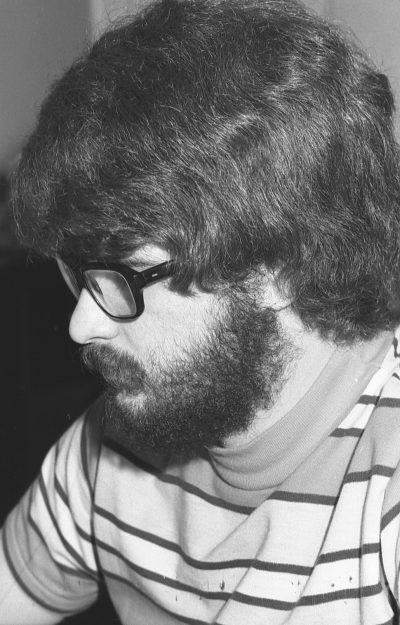
“Benson Electronics was sold around 1968 and I went with it,” says Johnson. “That company was then sold in 1972 and again I went with it to Kinemetrics. I worked for that company until retirement in 2016. I’m still consulting for them part-time. The company made earthquake sensors and recording equipment.
“I quit music entirely by 1975. After a long layoff, I took up guitar and bass again in 2012. Still playing just for myself for fun now.”
Drummer James Kehn maintained his personal and professional relationship with Richie Podolor and joined a group he had recorded called Gold.
“We did several gigs but not much transpired from it,” he says. “But the leader of that group, Larry E Williams, went on to write a big hit called ‘Let Your Love Flow’.”
From there, he joined Uncle Tom, working with producers Jerry Goldsmith and Steve Gold. The group began work on an LP but it was never completed and lead singer Bubba Keith and guitar player Richard Shack subsequently joined The James Gang.
“We used to open for War around town at the Roxy at the Watts Jazz Festival,” remembers Kehn.
“They changed the band name to L.A.P.D and put one of our tunes on the Live at Watts Jazz Festival, Volume 1. I’m referred to as Jim Keen.”
The band later put out an LP called LAPD, which, according to Kehn, was a take off on the Los Angeles Police Department. “To protect and serve” was on the side of police cars at the time and the LP had “to play and sing” as a take off on that. The group featured Andy Chapin on organ and the writer/guitarist Richard Shack who can be heard on the instrumental track “Big Herm”.
After a brief break from the craziness of Hollywood in the early 1970s when he gained a BA in Music in Olympia, Washington, Kehn returned to L.A and recorded with British artists Chad Stuart of Chad and Jeremy fame and actress Sarah Miles.
Reuniting with Al Perkins in the late 1970s, Kehn played with the group Ark and recorded a lone LP, The Angels Come. Around the same time, he appeared on an LP by well-known steel guitar players, once again featuring Perkins, called Pacific Steel Co.
Then in the early 1980s, Kehn met and worked with Bryan MacLean of Love fame.
“We recorded several songs with his sister Maria McKee who went on to form Lone Justice,” says Kehn.
“Bryan discussed contemporary country music a lot and soon wrote a hit song recorded by Patty Loveless called ‘Don’t Toss Us Away’.”
The drummer finally got tired of the roller coaster income from playing sessions and gigs around L.A and abandoned live work to go to technical school and learn computer programming.
When Kehn was interviewed in 2009, the drummer was in the process of recording a CD of his songs.
“I have been doing [computer programming] for the last 20 years plus, all the time writing, recording and playing in various bands,” he said at the time.
“I am currently the leader of the percussion section in a 70-piece concert band and I also play the kit in a 16-piece swing/dance band.”
By 2020, Kehn had retired from computer programing, left the concert band and had renewed contact with original Coachman member Matt Hyde. Kehn was still living in Portland, Oregon.
“Hyde and I have been recording original tunes (over the internet, as he is in the Los Angeles area),” he says.
“We made two CDs, are currently getting our third pressed, while working on our fourth. Having lots of fun doing whatever we want, however we choose. We doubt anyone else is interested so give the CDs to family and friends.”
Jim Hobson’s post Morning years were a mine of activity. Over the next forty years, he gained extensive experience as a staff and freelance recording engineer and did recording sessions that covered everything from song demos to radio and TV commercials, and from LP recordings for people like Albert King, John Mayall, John Fahey, Albert Hammond and Delaney Bramlett to CBS TV’s Sonny & Cher and movies.
During the mid-1970s, Hobson even reunited with Jay Lewis, working together with Albert Hammond.
After basing himself in San Francisco where he worked at Fantasy Studios and re-did the keyboard parts to the Emotions’ Sunshine LP, Hobson moved up to Seattle in 1978 and became a full-time employee at KING Broadcasting in its radio engineering department. There he helped build and install new studios for KING AM and KING FM in Seattle. He also found time to play keyboards on Country Joe McDonald’s LP Leisure Suite.
From the mid-1980s, Hobson began freelance contract engineering for numerous radio stations in the Seattle area but kept his hand in the performance side by playing jazz piano gigs. He also maintained his interest in writing, engineering, arranging and recording his own personal music project.
Since the early 2000s, Hobson’s focused largely on his personal solo piano music project and has kept in regular contact with Jay Lewis, contributing piano to two songs on the guitarist’s 2003 solo CD, This Island Earth, released under the name James J Donnellan.
Donnellan enjoyed an equally hectic career since Morning’s demise. His most notable achievement was a Grammy nomination for his work on engineering Gary Wright’s Dreamweaver LP in 1976. His engineering and production credits include such notable artists as Danny O’Keefe, Ringo Starr, John Travolta and Gordon Lightfoot.
As a musician, he’s recorded and/or performed with a who’s who of famous artists, including Art Garfunkel, Johnny Cash, Petula Clark, Albert Hammond and Mark/Almond. He’s also struck gold with his compositions, scoring numerous songs for a number of noteworthy movies, such as Fatal Charm, Almost Dead and the Teen Wolf TV series.
In 2003, Donnellan recorded his debut solo CD, This Island Earth. Tragically, his health deteriorated in 2010s and his current whereabouts are unknown.
The only thing that is left to do is get Morning’s recorded work from the early 1970s to a wider audience by finding a suitable label to re-issue the group’s two LPs plus previously unreleased tracks from the aborted third LP on one CD.
Huge thanks to Jeff Allen for the kind use of his photos. Copyright applies to all his photos. His work can be seen at this website.
I’d like to thank Barry Brown, James Donnellan, Jim Hobson, Terry Johnson and James Kehn for generously giving up their time to help piece Morning’s story together. Thanks as always to Mike Paxman for his help.
Morning now have a MySpace page: www.myspace.com/morningfromthe70s
Copyright © Nick Warburton. All Rights Reserved. No part of this article may be reproduced or transmitted in any from or by any means, without prior permission from the author.
This article was originally posted on the Nick Warburton website on 22 June 2009.

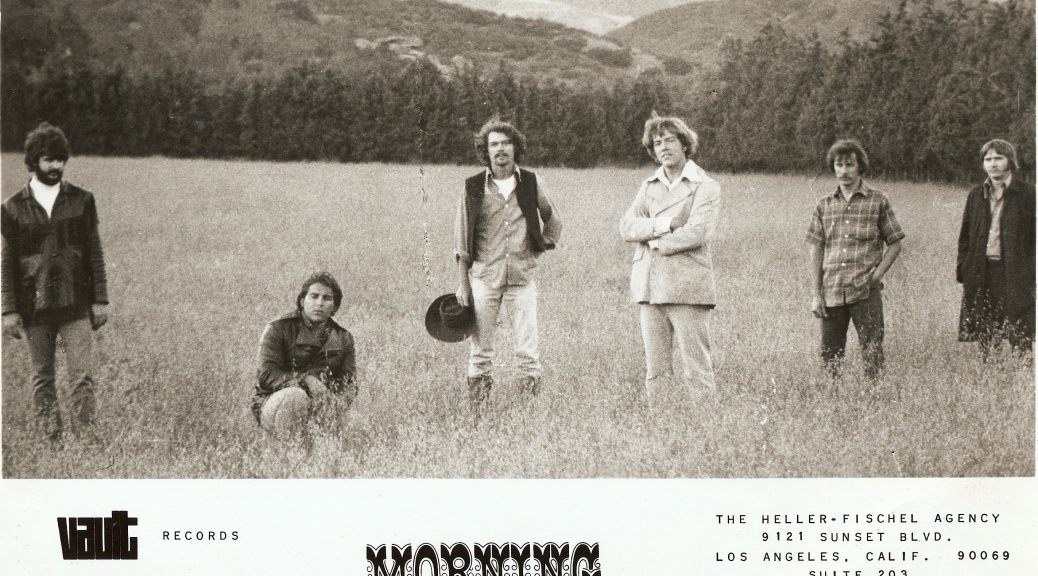
Kent Bash contacted me on 14 April 2013 with the following message:
I enjoyed the well done and insightful background and history of my friends and their group, Morning. They came to me to paint them an album cover when I was homeless and staying at a gas station of a friend. I knew the guys, and I guess they thought I was a pretty good artists. I painted the wraparound cover their at the gas station, and then the record company wouldn’t pay for it. The guys did a gig to raise the cash for me, and I shall always remember them for that. I was able to get a studio and place to live again. I am posting a photo tomorrow of the cover art on facebook. Look for Kent Bash and for the Morning painting. There is also a second painting I did shortly after the first, and if you look through the tons of art there you will find it. Even after all these years guys Thank You for you kind hearts.
Glen Burg contacted me on 19 January 2013 with the following:
Do you know how many YEARS I’ve been waiting for ANYONE to give me ANY information about Morning further than, “Oh, Jay Lewis was Jay Donellan in Love”? I remember the day I got into Morning: I walked into a local second-hand record store after sound check for a live TV gig. Two album covers struck me in a daze: ’60s Canadian band Kensington Market’s “Aardvark”, and Morning’s debut. This is perhaps the first and last time in my adult years that I bought _two_ albums almost completely by their cover alone. And both remain amongst my top, all-time favorite albums. But try getting info on them! I’d spin them on radio shows, get the odd comment from someone who’s listened (usually “Who’s that?”), and even passed a dubbed copy of both albums (back when they simply weren’t available first-hand in _any_ format) backstage at a gig to Jim Cuddy of Canadian country-rock sextet (and gig headliners) Blue Rodeo (even having the nerve to tell him, “You guys sound alike, though they’re a bit more psychedelic…” _then_ Blue Rodeo soon put out the very psychedelic-sounding “The Things We Left Behind”, which left me thinking someone in the band had been listening to the Morning dubs I’d given Jim (laughs)… as I’d secretly been hoping Blue Rodeo would record the “third Morning album”).
How on Earth did your blog slip underneath my radar for three years? More than that, how many years since Wounded Bird released Morning’s debut album on CD? I’m way up here in Canada, but I’ve been able to collect three LP copies in my university town alone (and even get a sealed LP copy online!). Really happy I’ll be able to get a CD copy now to join other country-rock favorites such as Space Opera and Poco.
Thank you for the ABSOLUTE WEALTH of information you present here! Before reading this, I thought I was the last living Morning fan on the planet. I can only hope the liner notes for the CD reissue of the debut album (copy ordered) are one tenth as informative as your comprehensive text!
I’m now rushing over to the band’s MySpace page in hopes that unreleased tracks from the _real_ third Morning album are there! Thanks for that, too!
All the best, and THANK YOU AGAIN!
Glen
Wow, this is AMAZING. Seriously, this is a book you’ve written. Impossible to find info revealed. Thank you so much. The amount of work you’ve put into this is really appreciated. Back in the mid 90s somehow I found Jay Lewis’ email, probably from a messageboard or something. Anyhow, since there was pretty much zero info about Morning I emailed him. At the time I was obsessed with Four Sail and Out Here, and I was particularly interested in Jay’s guitar work and needed to hear more. Basically I emailed him to tell him how much I liked his guitar work and to ask where could I buy the first Morning lp, cd, figuring maybe he’d know of a reissue or import or something. I was surprised to see his response the next day. He was very flattered, kind, and asked for my address so he could mail me a copy of the Morning Lp. So cool. Sure enough a week or so later I received a still sealed original pressing of Morning from Jay. What a kind thing for him to do. It meant a lot to me, plus it’s a really great album. “As It Was” in particular has haunted me for years. I hope Jay’s OK, he really went out of his way to make a fan happy.
Wow, what a brilliant article. THANK YOU. A buddy turned me on to Love recently and after getting to Four Sail I just had to know more about the sublime guitar work on that album. So I have just started scratching the surface of Jay Donnellan/Lewis’ work and this article has provided many helpful references and threads to keep pulling/researching. Thanks again for such an insightful and well written piece. Aidan.